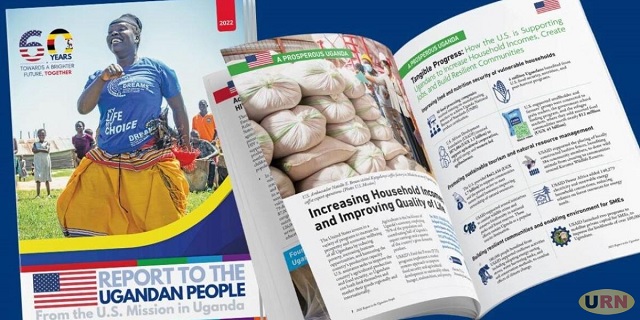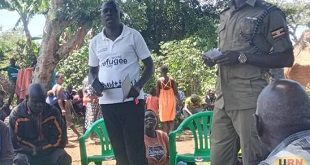
Kampala, Uganda | THE INDEPENDENT | The United States remained one of the largest contributors to Uganda’s health sector in 2023. There had been fears that the health sector in Uganda would suffer aid cuts following backlash between the two countries from the enactment of the Anti-Homosexuality Act.
Last year, the United States removed Uganda from the African Growth and Opportunity Act (Agoa).
AGOA gave Uganda and other sub-Saharan African countries duty-free access to the US for more than 1,800 products.
Despite that backlash, a report released by the US Mission in Uganda indicates that substantial support from the American people was extended to health, education, and agriculture among others. Funding to the health sector constituted 60 per cent of the disbursement in 2023.
The US through PEPFAR and USAID had funded Uganda’s HIV/AIDs prevention especially the PMTCT which has saved millions of Ugandan babies from getting HIV from their mothers. Uganda continued to receive support from PEPFER.
The report shows that nearly 1.4 million Ugandans receive lifesaving ARVs through PEPFAR (more than 95 per cent of all HIV+ Ugandans) and over 1.2 million have achieved viral suppression that prevents the spreading of the virus.
According to Ambassador William Popp, overall the US contributed largely to the health sector, entrepreneurship, refugees, education, democracy, and agriculture and less than two per cent of their funding went toward security.
Commenting about this, Richard Nelson the USAID Uganda Mission Director acknowledged the fact that despite these efforts, there are still very high rates of malaria infection which has prompted them to embark on studies that will later guide them on what innovations work best.
According to Nelson, over sixty per cent of their funding goes to health-related work.
However, the United States is also concerned about having a democratic, just, and stable Uganda, a reason they funded more than a hundred civil society organizations to conduct dialogues aimed at promoting human rights through among others assisting victims of abuse and legal reforms.
Statistics show nearly 2,000 Ugandans sought assistance through their legal aid clinics. But, Popp says they are always concerned when CSOs are working under pressure from the government.
Other statistics With U.S. funding: 2.5 million mosquito nets distributed; 3.2 million residents in 770,000 houses protected from malaria; 4,000 Ugandans trained for indoor residual spraying; and 5 million malaria testing and treatment kits provided to health facilities.
The United States funded 104 National Laboratories and helped 10+ regional referral hospitals switch to electronic medical records, boosting Uganda’s preparedness to respond to health threats.
 The Independent Uganda: You get the Truth we Pay the Price
The Independent Uganda: You get the Truth we Pay the Price



